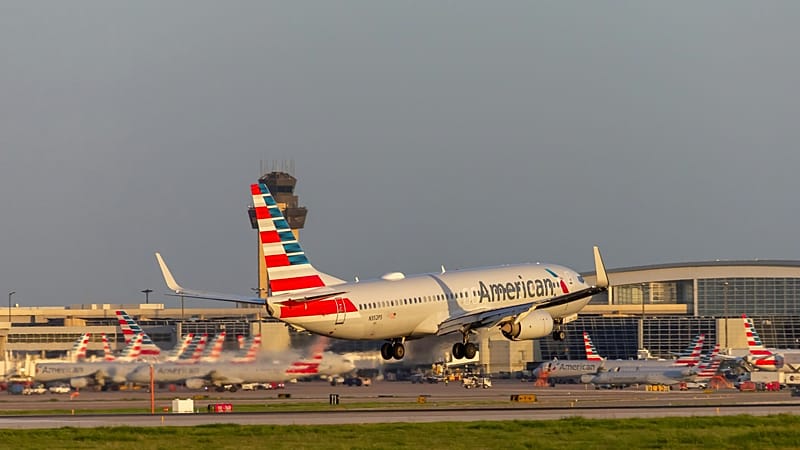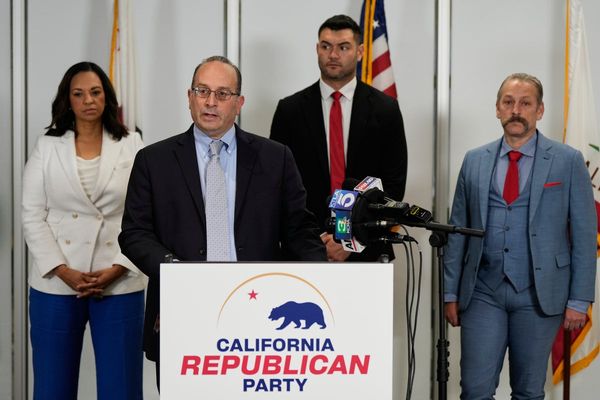
An already chaotic time for travellers in the US could become even worse.
As America’s government shutdown hits a record-breaking 36 days, the fallout is spreading from Washington’s halls of power to airports across the country.
On Tuesday, Transport Secretary Sean Duffy upped the stakes, declaring that parts of US airspace could be closed due to safety concerns if the deadlock continues.
His warning has raised the prospect of unprecedented disruption for millions of passengers entering, leaving or travelling in the country.
“If you bring us to a week from today, Democrats, you will see mass chaos, you will see mass flight delays. You’ll see mass cancellations, and you may see us close certain parts of the airspace, because we just cannot manage it,” Duffy said.
“We will restrict the airspace when we feel it’s unsafe.”
But what would this mean for travellers, and is chaos in the skies really on the horizon?
‘Mass chaos’ looms as unpaid staff walk off the job
The last time the US closed its airspace was in the wake of the 11 September 2001 attacks. With no end to the shutdown in sight, frustration is spilling into the country’s air network and making another closure suddenly seem possible.
Thousands of air traffic controllers and airport security officers are still working without pay. According to aviation insiders, more are beginning to call in sick to find temporary jobs elsewhere to make ends meet.
“I think you’re also seeing people who are just calling in sick because they’re fed up and they’re like, ‘well, I’m going to spend the holiday weekend with my kids for once,’” one air traffic controller told NPR this week.
The Trump administration has said the shutdown has left shortages of up to 3,000 air traffic controllers. Employees of the Federal Aviation Administration (FAA) have already missed one paycheck.
Duffy and the head of the National Air Traffic Controllers Association have warned that the longer it continues, the more the financial pressure on those forced to work without pay will grow.
It is difficult to predict how much worse the situation could get if they miss a second paycheck but the shutdown has already left some passengers facing longer queues, missed connections and hours of waiting in airports or on the tarmac.
What do delays and cancellations look like for US travellers so far?
Normally, airlines strive to have at least 80 per cent of their flights depart and arrive within 15 minutes of when they are scheduled. Aviation analytics firm Cirium said that since the shutdown began on 1 October, the total number of delays overall has not fallen significantly below that goal because most of the disruptions so far have been no worse than what happens when a major thunderstorm moves across an airport.
But on Sunday, only about 56 per cent of Newark's departures were on time, and the Orlando airport reported that only about 70 per cent of its flights were on time, according to Cirium.
Industry groups estimate that more than 3.2 million passengers have already been affected since the shutdown began. On Tuesday alone, nearly 3,000 flights were delayed after shortages hit air hubs such as Phoenix, Houston, Detroit and Denver.
Airlines are also warning that the chaos could soon hit bookings if travellers lose confidence in the system – especially if the safety of American skies takes a PR hit.
“Every single day that this goes on tomorrow is now less safe than today,” Nick Daniels, president of the National Air Traffic Controllers Association, told CNN.
What would airspace closures mean for travellers?
Even a partial closure of US airspace would have widespread consequences because the country’s air traffic control system is highly interconnected.
According to the Federal Aviation Administration, air traffic centres handle flights across multiple regions, meaning delays or restrictions at one facility quickly affect others. Industry analysts, including Airlines for America (A4A), have also warned that staffing shortages in one region can cause “nationwide ripple effects” across the network.
If a major centre limits arrivals or departures, those delays cascade through other airports, creating knock-on cancellations and missed connections far from the original problem. And reroutings and reduced capacity across the US could have a huge impact on international schedules, complicating onward travel to Europe and elsewhere.
While a full closure isn’t yet on the table, the warning highlights how fragile the system has become after more than a month without funding.
At the time of writing, more than 480 flights within, into or out of the United States had already been delayed today, while 57 had been cancelled, according to FlightAware.







